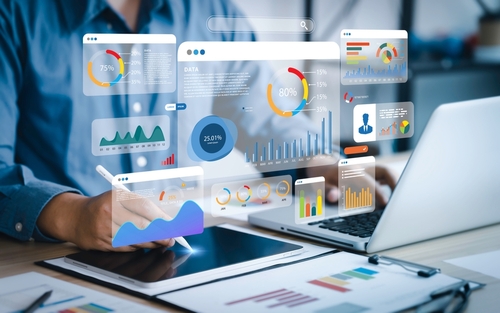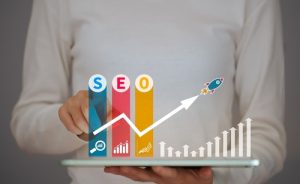Is Your Website’s LCP Holding You Back? Here’s How to Fix It
If you’ve been diving into the world of website optimization lately, you’ve probably heard of something called Largest Contentful Paint (LCP). Sounds fancy, right? Well, LCP is actually pretty straightforward and plays a big role in how well your website performs—both in the eyes of search engines and your users.
The digital marketing team at Now Media Group explores the importance of LCP and ways to improve your SEO with LCP. Call (858) 333-8950 to learn more about our digital marketing services.
What is Largest Contentful Paint (LCP)?
LCP is a metric that measures how long it takes for the largest piece of content on your page (think images, banners, or blocks of text) to load and appear on the user’s screen. It’s part of Google’s Core Web Vitals, which means it directly affects your site’s SEO rankings.
But beyond search engines, LCP also impacts how your visitors experience your site. If it takes too long to load, you could lose their attention (and potentially their business) in just a few seconds.
The Connection Between LCP and SEO
Google’s Focus on User-Centric Metrics
Google has made it clear that speedand user experience are non-negotiable when it comes to SEO. They want to reward websites that not only deliver valuable content but also do it quickly.
This is where LCP comes in—it’s one of the core metrics Google uses to evaluate your page’s load performance. A faster LCP signals to Google that your site is optimized and user-friendly, which can help boost your rankings in search engine results pages (SERPs).
How LCP Impacts Search Rankings
If your website’s LCP is slow, it’s likely going to hurt your search rankings. Google considers LCP as part of its Core Web Vitals, which means it directly influences where your site appears in search results.
When a site takes too long to load the main content, Google sees this as a bad user experience (UX) and will prioritize faster sites. So, if you’re aiming to get more organic traffic through SEO, improving your LCP is essential.
Real-World SEO Benefits of Improving LCP
Improving LCP can have a tangible impact on your SEO. Websites with a fast LCP are more likely to appear on the first page of search results, which means more visibility and, ultimately, more traffic.
For example, companies that have optimized their LCP will see better rankings and higher click-through rates. This is proof that optimizing for user experience does pay off.
The Role of LCP in Enhancing User Experience
Nowadays, people don’t like to wait—especially when it comes to the internet. Visitors will bounce off and look for faster alternatives if your site takes too long to load. Studies show that users expect a website to load in less than three seconds, and LCP is a big part of meeting that expectation. If the most important content on your page doesn’t load quickly, users might not stick around to see the rest.
A fast LCP can also help keep users engaged. When your site loads quickly, visitors are more likely to explore it further, click on your links, and even convert into customers. On the flip side, if your LCP is slow, they’re more likely to hit the back button—leading to higher bounce rates and lost opportunities.
Factors That Influence LCP
Image and Video Optimization
Large images and videos are often the main culprits behind slow LCP. When these media files take too long to load, your LCP score takes a hit. The good news is, optimizing these files can significantly improve LCP. Compressing images, using next-gen formats like WebP, and reducing the resolution of videos can make a noticeable difference in load times.
Server Response Times
Another factor that affects LCP is server response times. If your server is slow to deliver content, it delays how quickly the page’s largest element can load. One solution is to use a Content Delivery Network (CDN), which can distribute your site’s content across multiple servers worldwide, speeding up the delivery to users no matter where they’re located.
JavaScript and CSS Optimization
Too much JavaScript or CSS can block your page from loading quickly. When your browser has to load large scripts before rendering the page, it slows everything down—including LCP. By minimizing, deferring, or asynchronous loading of JavaScript and CSS, you can help speed up LCP and deliver content to users faster.
Tools to Measure and Improve LCP
- Google’s Core Web Vitals Report: One of the easiest ways to measure your site’s LCP is by using Google’s Core Web Vitals report in Google Search Console. This tool breaks down the performance of your site’s pages and highlights areas that need improvement, including LCP. It’s a great starting point to see where your site stands.
- PageSpeed Insights: Google’s PageSpeed Insights tool is another useful resource for diagnosing LCP issues. It gives you a score for LCP and offers actionable recommendations to improve it. Plus, it shows you how your site performs on both mobile and desktop devices.
Other tools, like Lighthouse and GTmetrix, can also help you measure and improve LCP. These tools provide detailed reports on what’s slowing down your page and offer suggestions for optimizing it.
Best Practices for Optimizing LCP
Optimizing Images and Media
One of the most effective ways to improve LCP is by optimizing your images and media. Start by compressing large files and converting images to modern formats like WebP.
You should also consider lazy loading, which means that images and videos only load when they come into view, rather than all at once when the page first loads.
Prioritizing Above-the-Fold Content
To improve LCP, focus on getting your critical content—especially what’s visible above the fold—to load quickly. Prioritizing this content ensures that users see the most important information first, even if the rest of the page takes a little longer to load.
Minimizing JavaScript and CSS
To speed up LCP, aim to minimize the amount of JavaScript and CSS that loads during the initial page render. By deferring non-essential scripts and styles until after the main content is loaded, you can reduce the delay in displaying your page’s largest elements.
Take Control of Your Website’s Performance!
Optimizing your website’s Largest Contentful Paint (LCP) is a key step toward improving both your SEO and user experience. By making small adjustments, like optimizing images, reducing server response times, and refining your JavaScript, you can significantly boost your site’s speed and search rankings.
Not sure where to start? Let our digital marketing team help! Contact us today at (858) 333-8950 to schedule a consultation. Start improving your LCP today and see the difference it can make!



